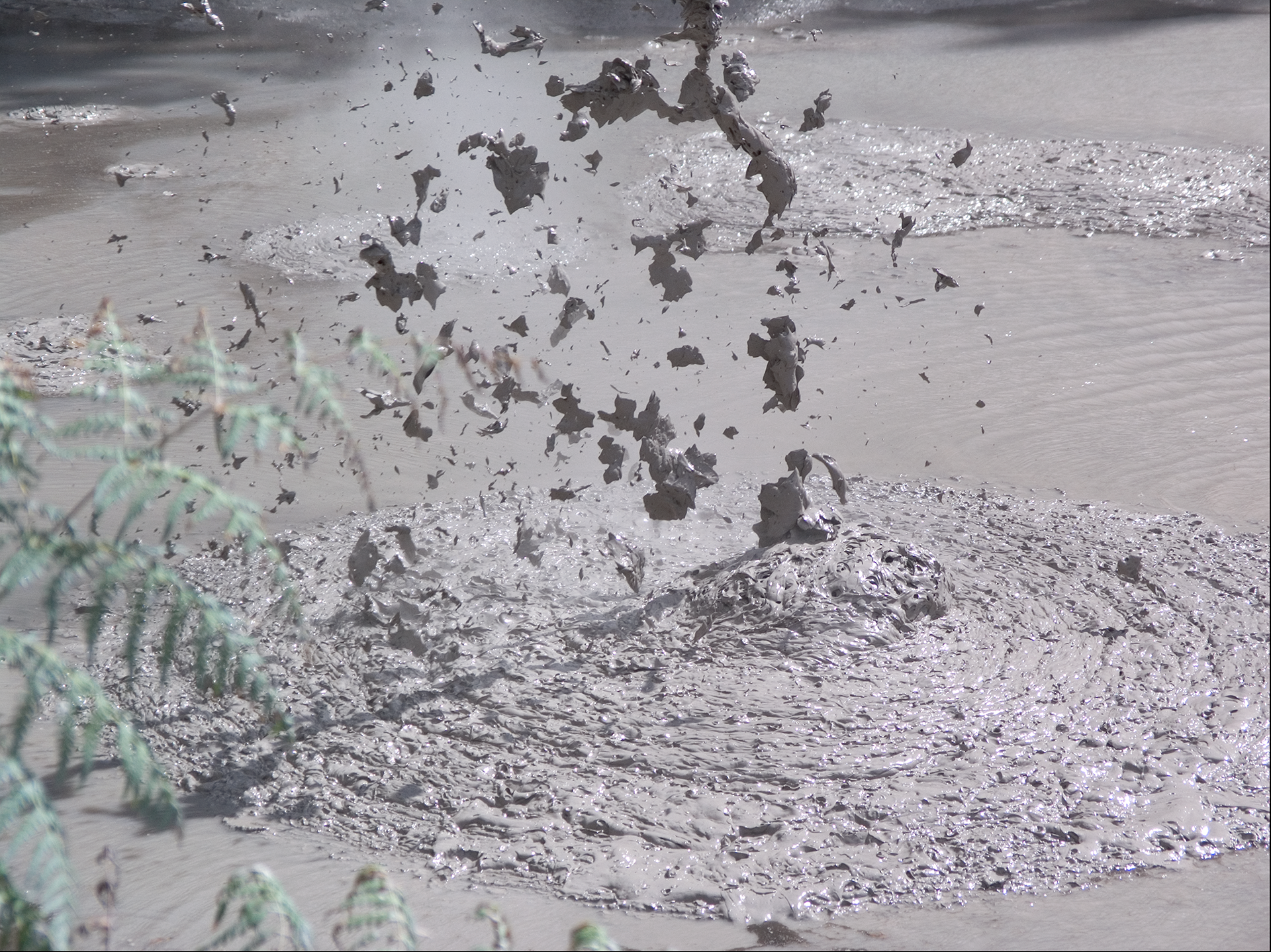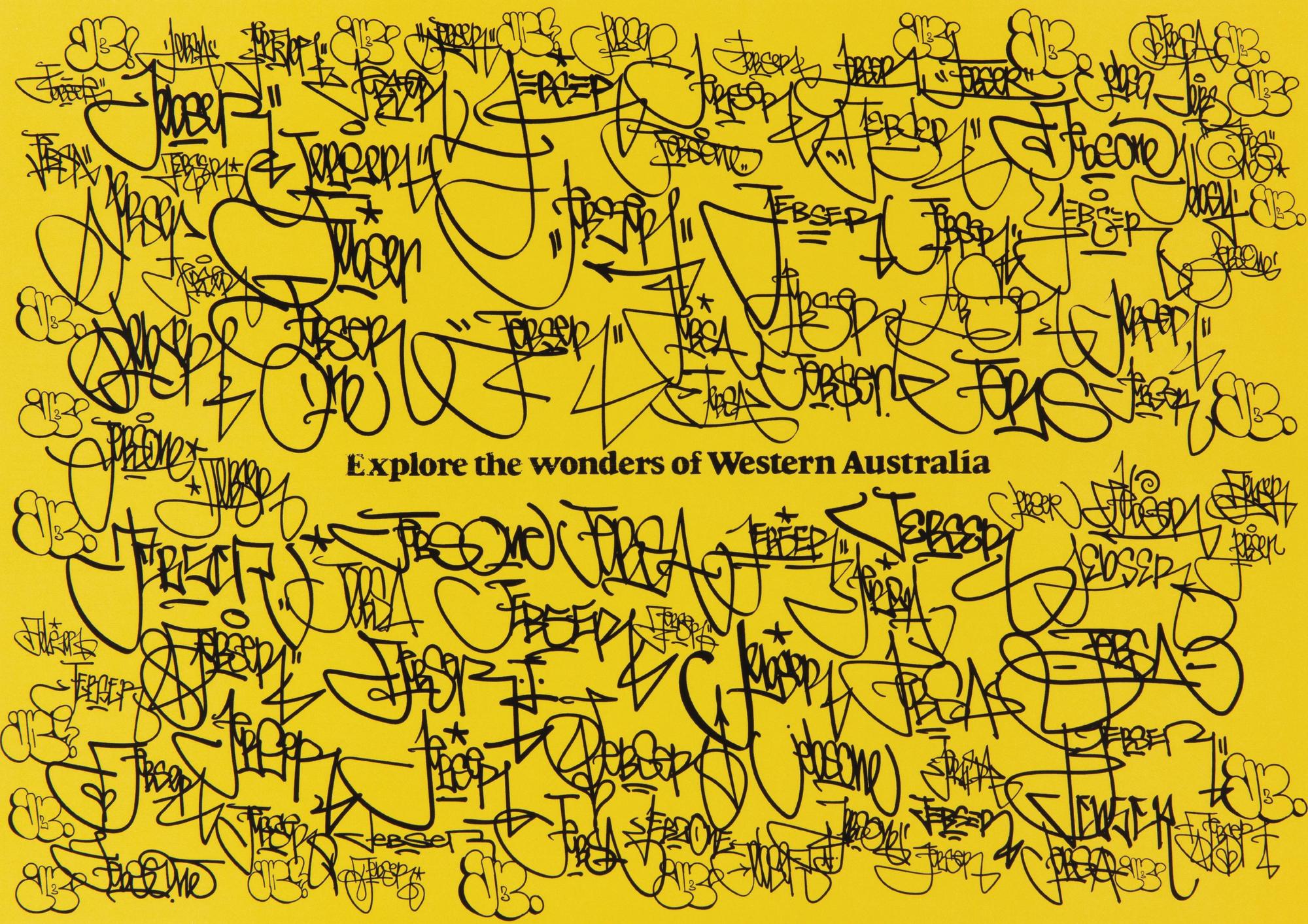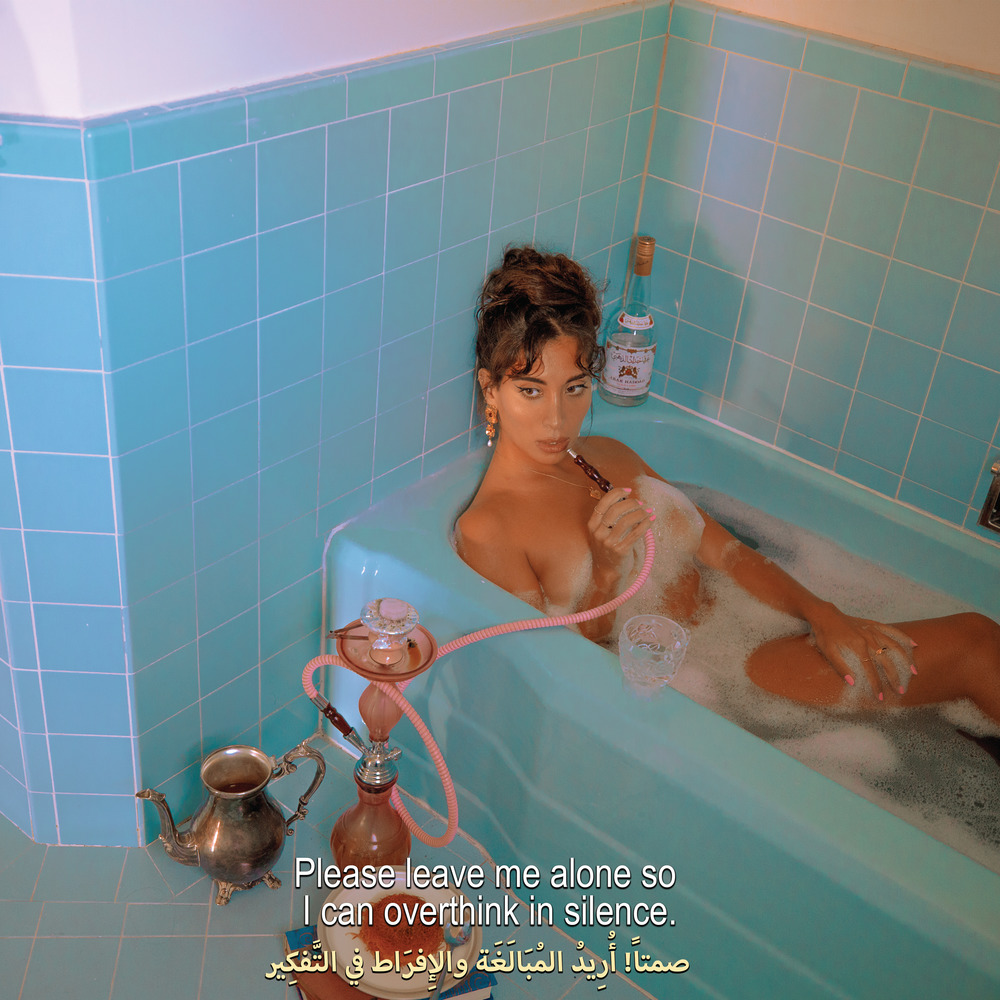Rodney Glick: Everyone, Everyday
Glick’s arresting and intricate sculptures created with Balinese artisans—three of which feature in “The View From here”–elevate every day and everyone.
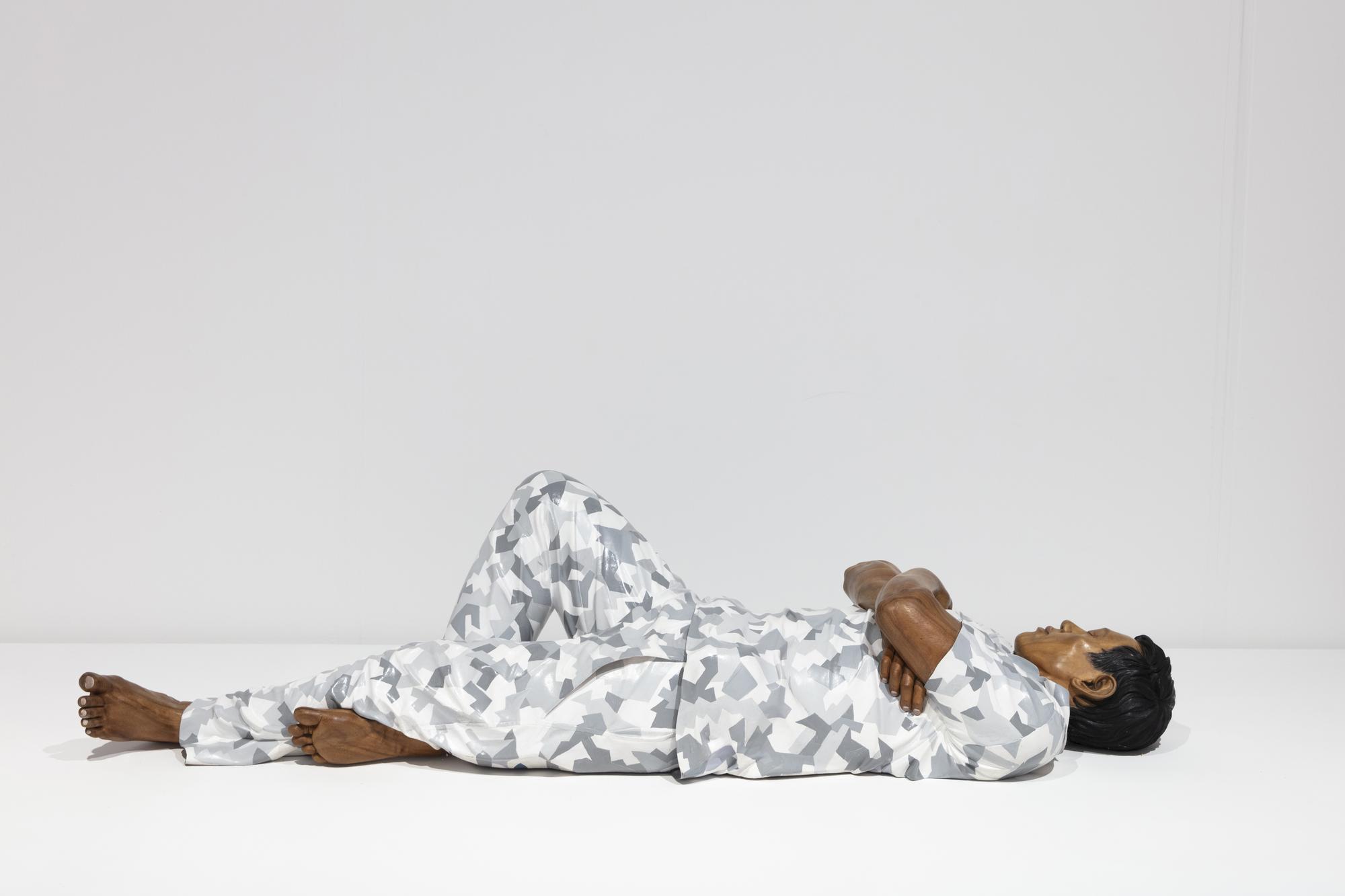
Rodney Glick Imagine You Know What You’re Doing 2017-2020. Project Team: Ketut Apel Suartika, Wayan Darmadi. Painted hand carved wood, 46 x 50 x 180 cm. On loan from the artist.
RODNEY GLICK’S RESTLESS, ever-curious energy has flowed through the entwined circuitry of carving and coffee for a good few years now.
The art of producing a fine caffeinated brew takes up much of the Bali-based Western Australian artist’s time these days. That, and the collaborative community enterprise of woodcarving. The slow craft of extracting refinement from raw material in both enterprises is how Glick elicits artistic meaning from the everyday.
It’s been this way since Glick first moved to Bali from Perth in the mid-2000s. Soon after he participated in the 2014 group show Bali: Return Economy at Fremantle Arts Centre (FAC), he ceased exhibiting in Australia altogether to absorb himself in his growing Balinese art and coffee business.
That exhibition was co-developed by centre curator Ric Spencer and Chris Hill, a significant collector of south-east Asian art and a strong influence on Glick’s practice. It was Hill who introduced Glick to the Balinese carvers and painters around Ubud with whom he continues to collaborate on his sculpture series, Everyone, Everyday.
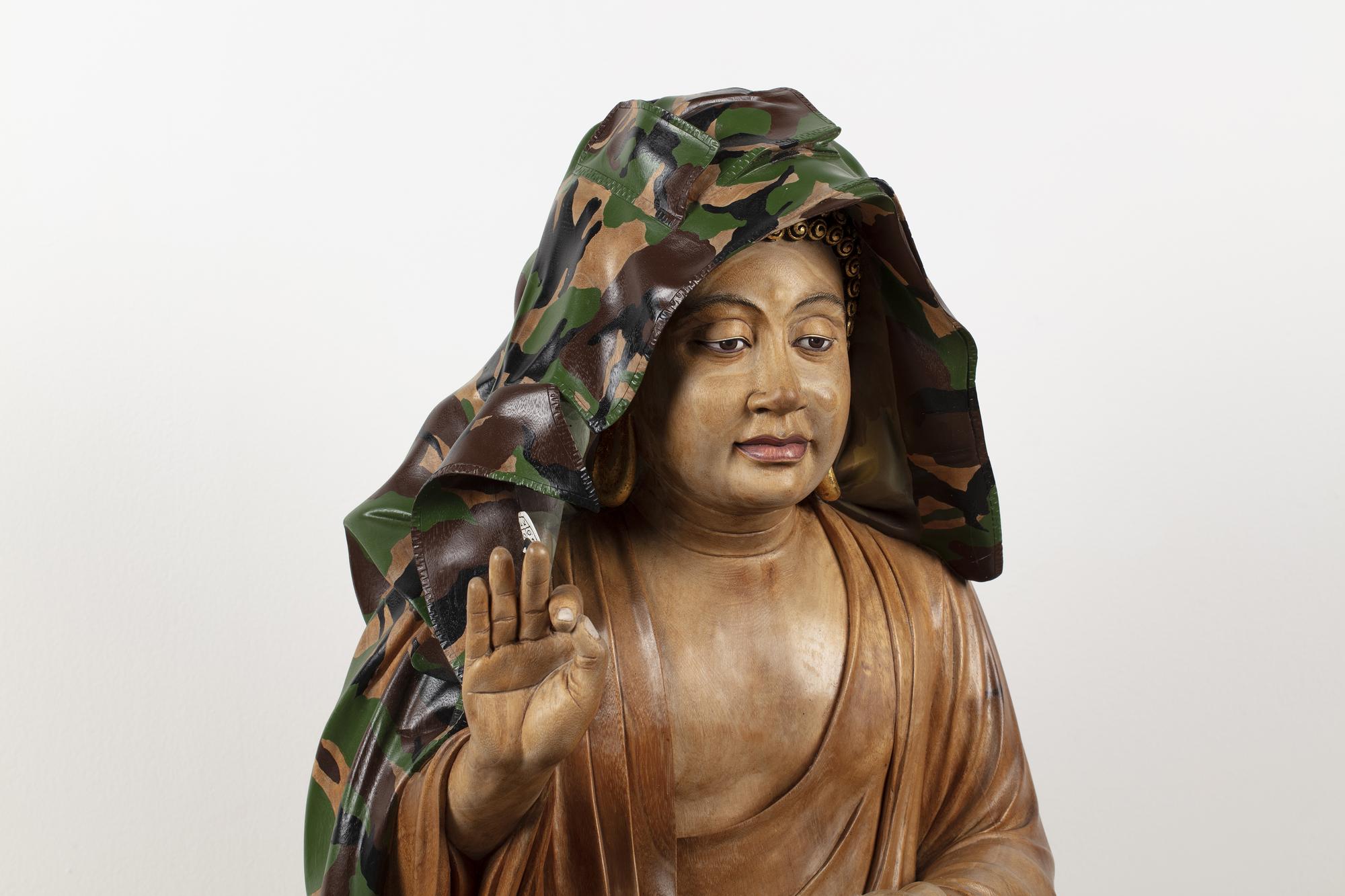
Rodney Glick Everything Happens to Everyone 2016- 2020. Project Team: Ketut Apel Suartika, Wayan Darmadi.
Painted hand carved wood, 130 x 80 x 70 cm. On loan from the artist.
The FAC show featured a “reading room” in the gallery inspired by Glick’s Ubud coffee shop. On the wall of the gallery was inscribed the words: “Imagine You Know What You’re Doing”.
This same “fake it until you make it” imperative also adorns the artist’s Seniman Coffee Studio—the Ubud art house/coffee house which channels another cheerful Glick aphorism: “The imagined becomes real, and the real becomes art.”
The indistinguishable business of art and life—the role-playing applied to fulfil various worldly needs and obligations—has been a hallmark of Glick’s idiosyncratic, often humorous work across installation art, video, photography, sculpture, painting, architecture and guerilla-style conceptual projects since the mid-1980s.
His solo and collaborative projects with other artists, designers, writers and architects have been shown around the world and acquired by the likes of the National Gallery of Australia, MCA Sydney and The Art Gallery of Western Australia (AGWA), where a selection of new Everyone, Everyday works now feature in The View From Here exhibition.
Glick also is a coffee professional and his shopfront (named after the Bahasa word for artist) is part of a coffee export business that is vertically integrated from bean to cup. In some ways, Seniman Coffee Studio shares its DNA with IASKA (International Arts Space Kellerberrin Australia), Glick’s Wheatbelt collaboration in the late 1990s with writer Marco Marcon and farmers Tony York and Donna Dransfield.
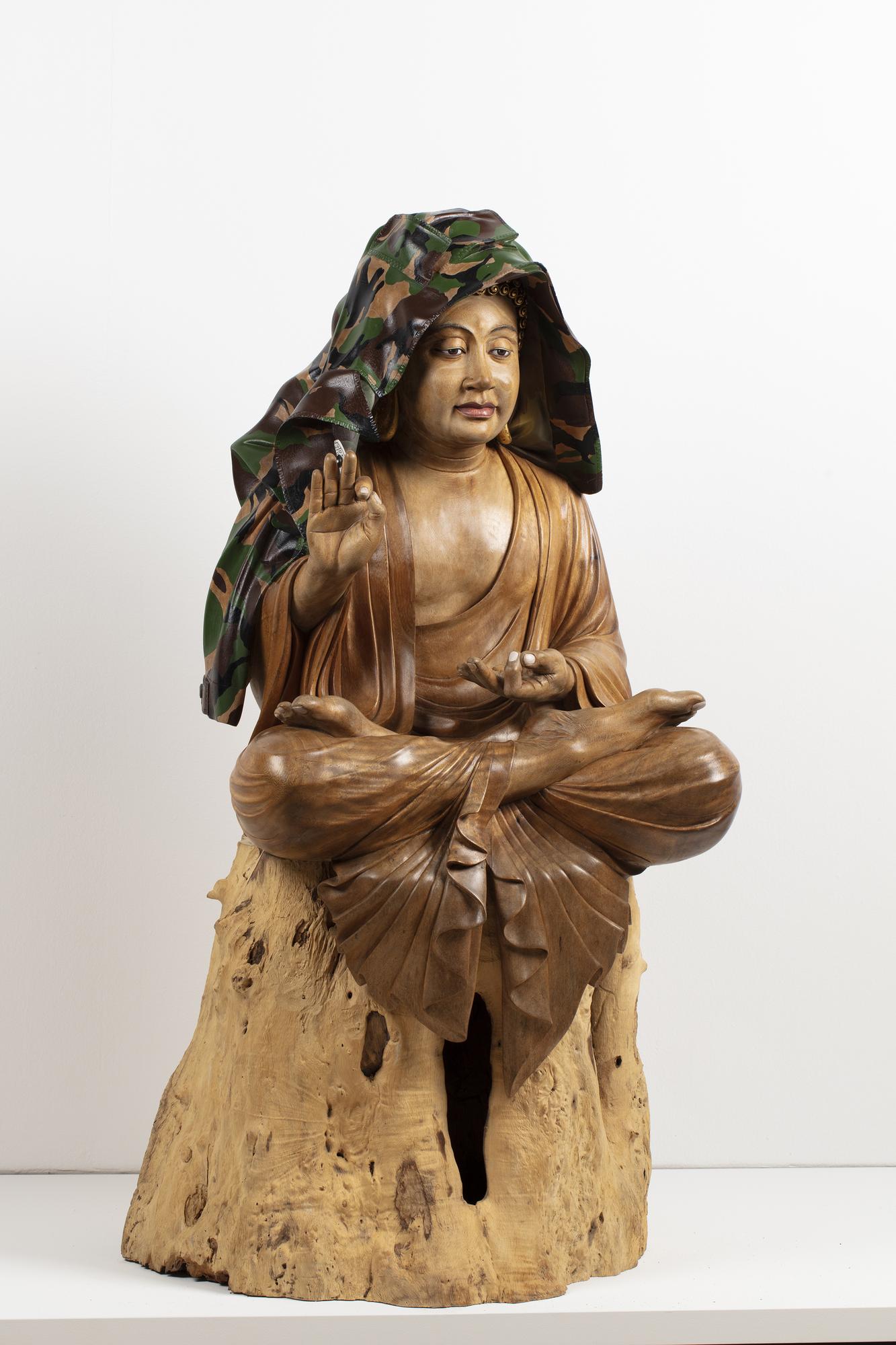
Rodney Glick Everything Happens to Everyone 2016- 2020. Project Team: Ketut Apel Suartika, Wayan Darmadi.
Painted hand carved wood, 130 x 80 x 70 cm. On loan from the artist.
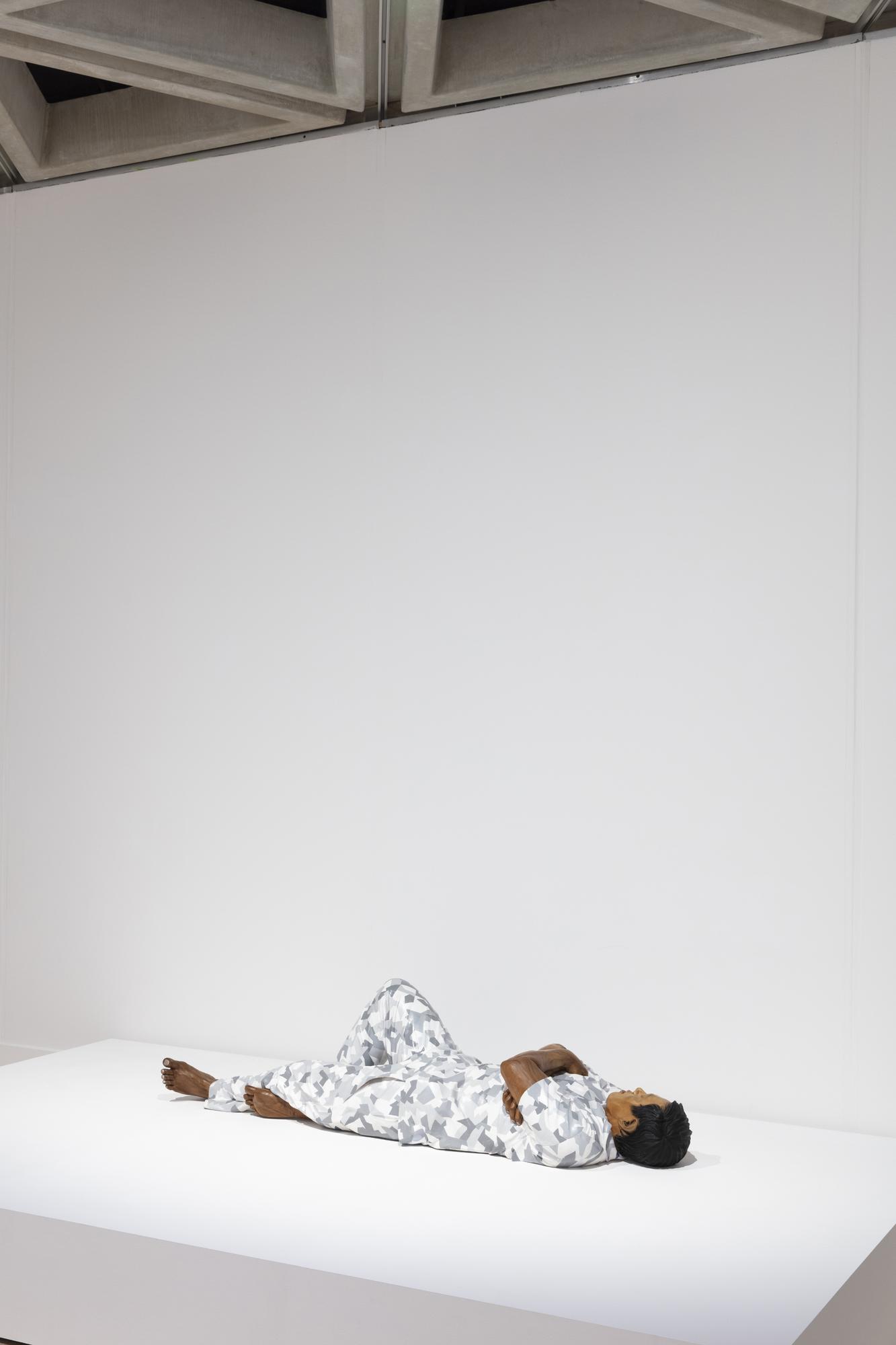
Rodney Glick Imagine You Know What You’re Doing 2017-2020. Project Team: Ketut Apel Suartika, Wayan Darmadi. Painted hand carved wood, 46 x 50 x 180 cm. On loan from the artist.
Like IASKA, Seniman is both an artistic expression and a functional enterprise. The coffee business is both the art and the frame. The artists in Bali are practising what we now call “glocalism”, wherein global influences are morphed and reconfigured through local practices and values.
IASKA offered international artists residencies in an old Kellerberrin store and was designed to shock rural residents and visiting artists out of their comfort zones, sparking new thinking about art practice and local identity.
Glick says IASKA’s awkward juxtaposition of international high-art institution in a conservative rural heartland was a joke with a serious purpose: “I got involved because it was fun,” he says.
For Glick, humour—and art—often come from extreme, unexpected contrasts. The conceptual meaning flows from the surprising, unintentional placement of unrelated objects together.
Glick says he has settled so well in Bali because the Balinese aesthetic does not distinguish between the everyday and the spiritual and artistic, unlike prevailing attitudes in the West. Business and art, life and art, are indistinguishable, he says. There are no boundaries. “Work and not work, spiritual and not spiritual, that all just takes place here. Someone may spend half a night preparing for a ceremony, doing some carving and then be making coffee as a barista for the next part of the day. There is no moving between one space and another. There is just moving.”
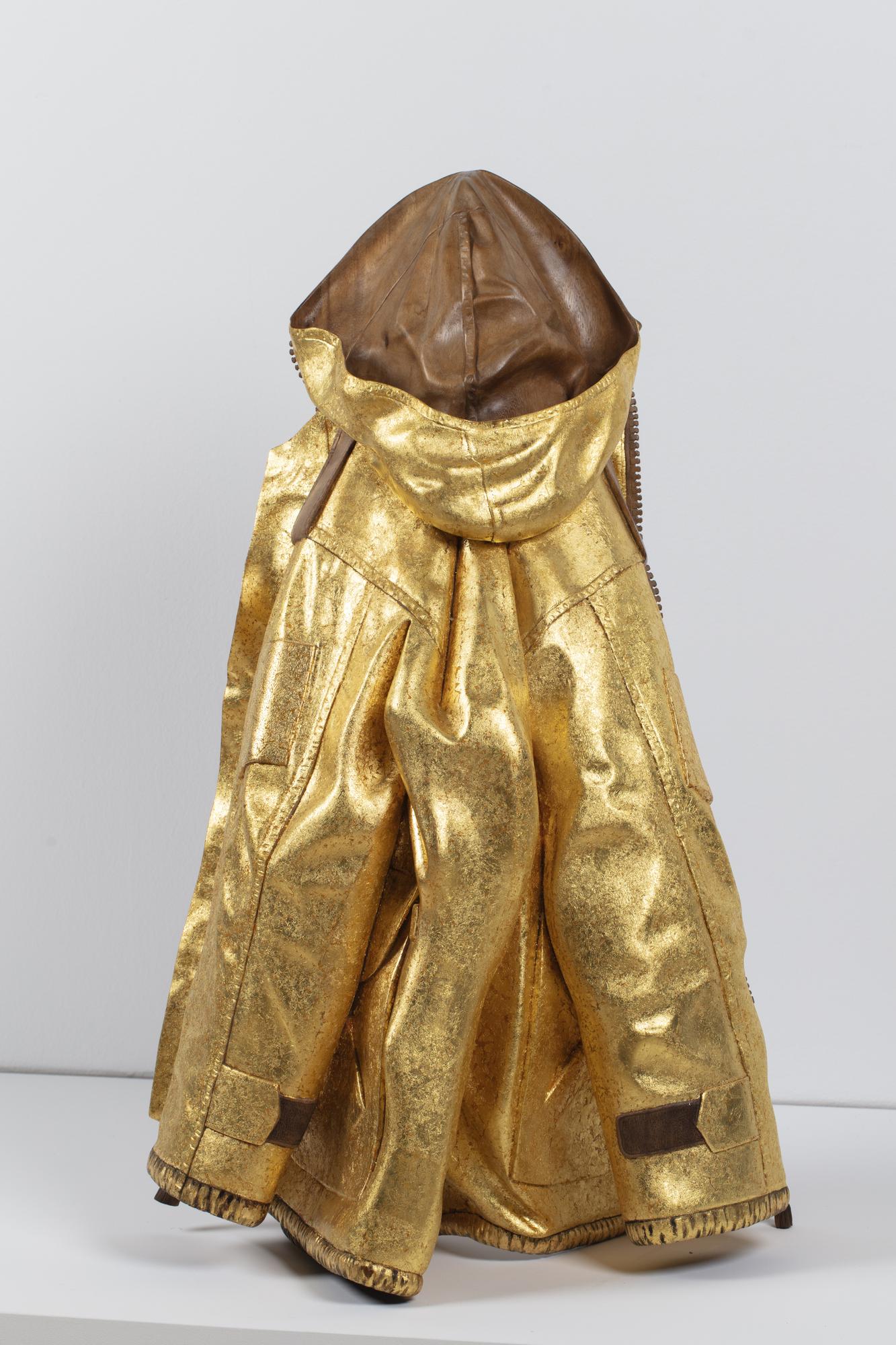
Rodney Glick This Is You 2017- 2021. Project Team: Ketut Apel Suartika, Wayan Darmadi. Gold gilded hand carved wood, 91 x 40 x 58 cm. On loan from the artist.
Carving and coffee both flow organically out of community life in Bali. However, the Balinese artisanal tradition of intricately hand-carved and painted sculptures and artefacts is threatened by big dealers, rising timber prices and fewer customers—even before COVID-19 hit the tourism market.
“[Local artisans] are happy for the work I do with them. I am their only customer around here. I am very appreciative of their skill,” says Glick.
Carvers and painters who have helped create the Everyone, Everyday series include Made Leno, Ketut Apel Suartika, Komang Suryana, Wayan Darmadi and Dewa Tirtayasa.
“I produce the idea and they oversee the creation of that idea,” he says. “I’ve never really placed a lot of value on the fact that I need to do it. I’m not producing art because I need to make it. I produce art because I see a whole lot of strange juxtapositions and interesting things. The skill involved is well beyond my skill base. It is mind-blowing.”
Glick says entire families of the woodcarvers who work with him now also apply their same tactile care to producing coffee. It’s something he outlines in his latest coffee-table book Bali Coffee, Origin’s New Wave (2021, Afterhours Books, Jakarta).
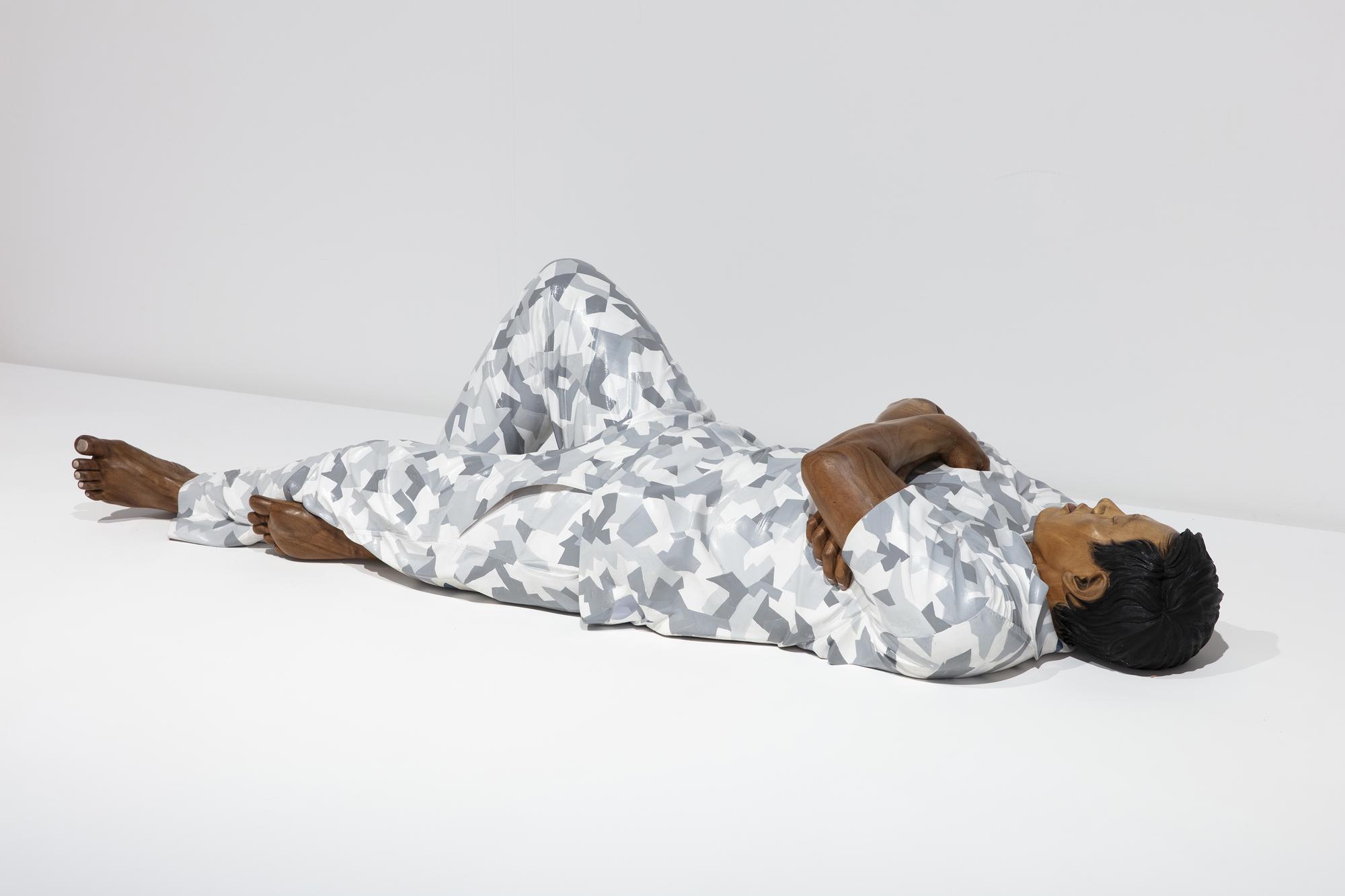
Rodney Glick Imagine You Know What You’re Doing 2017-2020. Project Team: Ketut Apel Suartika, Wayan Darmadi. Painted hand carved wood, 46 x 50 x 180 cm. On loan from the artist.
Many of Glick’s earlier art projects followed the fictional realism model—artfully constructed schemes that paralleled reality, such as his 25-metre-long blue tarpaulin single-lane Lap Pool, which stretched down a suburban Perth street in 2004.
His career pivoted on an “epiphany” he had while seeing an exhibition of Indian religious sculptures at the Smithsonian Institute in Washington DC in 2006. These multi-limbed Hindu deities and Buddhist bodhisattvas represented a sequence of movement with all stages frozen in the moment.
Inspired by this Eastern iconography, he sought to give shape to the truism that God resides in everyone, that there are no boundaries between the ordinary and the supernatural. The gods are simply ordinary people in extremis.
It led Glick to Hill and the carvers and painters of Bali. They turned his manipulated photographs of ordinary people—his friends, acquaintances and even himself at times—into a series of exquisitely crafted, refined works described by Australian writer Robert Finlayson as “garish uber-realism”.
Glick’s more recent Everyday works also render mundane objects—from daily flower offerings to plastic stools, tables, clothes, bottles and bricks—into sculptures that celebrate the seamless flow between art making and other aspects of domestic and ceremonial life.
His participation as one of 30 leading WA artists in AGWA’s latest show sits in the wider context of iOTA21, the first Indian Ocean Craft Triennial, which brings to Perth the work of craft-based artists from across the region.
Glick’s more recent Everyday works also render mundane objects—from daily flower offerings to plastic stools, tables, clothes, bottles and bricks—into sculptures that celebrate the seamless flow between making art and other aspects of domestic and ceremonial life.
For visitors to The View From Here, Glick delivers Imagine you know what you’re doing (Sleeping man) (2017 – 2020), a life-size, hand-carved, painted wood horizontal figure, clad in military fatigues. Despite the tropical Balinese context, the uniform is the mottled grey and white of snow camouflage, an oddity reinforced by Glick’s “disappearing act” of placing it in an all-white display.
Accompanying it is This is you (Golden jacket) (2017 – 2020), a gilded, feather-down jacket; and Everything happens to everyone (Buddha army jacket) (2016 – 2020), a seated Buddha with an everyday army jacket draped over it as if discarded casually in the hallway of a home—the domesticated statue acting as a clothes hanger. There’s no disrespect, that’s how things are as religion, art and life.
For years, Glick has photographed and recreated as painted carvings the Hindu votive offerings of flowers, fruit and incense sticks which are much photographed by tourists when freshly placed on doorsteps and windowsills.
“What people don’t take photos of is that 20 minutes after those offerings have been given, they become integrated into everyday life,” Glick says. “They dissolve into whatever is happening outside the door, in the street. They are just trashed, trodden on, driven over, kicked or pecked at by a duck or chicken.”
The fate of these offerings captures the transcendent cycle of life. The sacred detritus—like us all—has served a purpose. With the offering made, their makers simply move on to the next task.
This article was first published in the print publication The View From Here in October 2021 under the title Everyone, Everyday.
